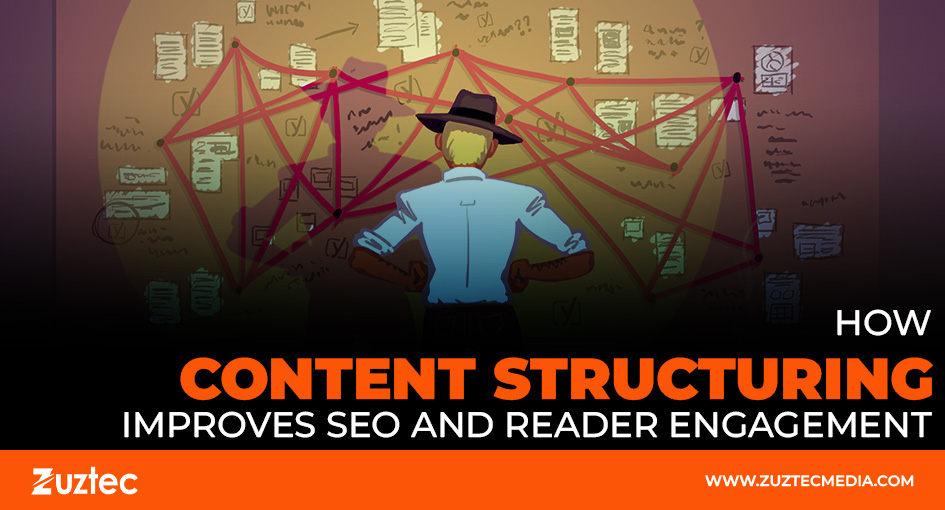
How Content Structuring Improves SEO and Reader Engagement
Creating quality content is essential for online visibility, but even the best ideas can get lost if the structure is confusing or messy. That’s why structuring content is one of the most important parts of effective content creation. A well-structured piece not only looks better but also reads better, making it easier for both readers and search engines to understand your message.
Content structuring is about organizing your information in a clear, logical way. This includes using headings, subheadings, bullet points, short paragraphs, and a smooth flow from one section to the next. It helps guide the reader through your content while highlighting the most important points.
From an SEO perspective, structure matters just as much. Proper headings, keyword placement, and internal linking help improve your rankings. If your content is easy to scan and provides answers quickly, it’s more likely to show up higher in search results.
The majority of people in today’s busy world scan rather than read. Readers may quickly abandon your page if your content is disorganized. On the other hand, well-structured content holds attention longer, increases engagement, and leads to better results.
In this article, we’ll break down the basics of structuring content, explain why it matters for SEO and user experience, and offer tips to help you create content that performs well across all platforms.
What Is Content Structuring?
It refers to how information is arranged and presented on a page. It ensures that your content flows logically and is easy to read, helping both users and search engines understand the main message.
- Clear headings and subheadings
- Short, focused paragraphs
- Bullet points or numbered lists
- Visual hierarchy with font sizes and styles
- Strategic use of keywords
A strong structure gives readers direction and helps them find what they’re looking for without frustration.
Why Does the Structuring of Content Matter
It isn’t just a design choice—it’s a critical part of delivering value. Here’s why it’s important:
- Boosts SEO: Search engines rely on structure to index and rank your pages accurately.
- Increases engagement: A clear format keeps readers interested and encourages longer visits.
- Supports accessibility: A logical layout makes your content easier to navigate for everyone, including users with disabilities.
- Enhances mobile experience: Well-structured content adapts better to smaller screens.
Key Elements of Good Content Structure
To create well-structured content, focus on the following elements:
- Headings: Use H2 tags for major sections. This helps with SEO and guides the reader.
- Paragraphs: Keep them short—two to four sentences is ideal.
- Lists: Break up complex points into bulleted or numbered lists for easier reading.
- Transitions: Use clear language to move from one idea to the next.
- Visuals: Add images, charts, or infographics where appropriate to support your text.
Each of these elements plays a role in improving clarity and flow.
Content Structuring and SEO
Content structure is used by search engines to ascertain the purpose of your page.. If your content is properly structured, it increases your chances of ranking higher. Here’s how structure helps SEO:
- Keyword clarity: Search engines easily identify key phrases in headings and early paragraphs.
- Crawlability: Structured content is easier for bots to read and index.
- Internal linking: Structured pages make it easier to add links between related topics, improving site structure.
Google favors content that’s both user-friendly and well-organized, so your structure directly impacts your visibility.
How to Plan Structured Content
Start with a clear plan before you begin writing. Follow these steps:
- Assign headings: Use H2s to organize sections.
- Write in blocks: Focus on one idea per paragraph.
- Add supporting details: Use examples, quotes, or data to strengthen each point.
- End with a summary: Wrap up your content with a strong conclusion.
Planning in this way helps avoid repetition and keeps your message focused.
Structuring Different Types of Content
Not all content follows the same pattern, but structure is important for all formats:
- Blog posts: Use clear introductions, subheadings, and conclusions.
- Landing pages: Guide users toward a goal with a structured layout and persuasive content.
- How-to guides: Break instructions into steps with numbered headings and visuals.
No matter the type, structure improves clarity and leads to better results.
Tools That Help You Structure Your Content
Several tools can help you organize and format your content more effectively:
- Grammarly: Checks grammar and readability.
- Google Docs Outline Tool: Shows heading structure for quick review.
- Notion or Trello: Useful for planning your content structure before writing.
These tools can improve both writing quality and structural clarity.
However, content structuring is more than just formatting—it’s a strategy that supports better communication, stronger SEO, and a smoother user experience. By organizing your information in a clear, logical way, you help readers understand your message and keep them engaged longer.
A well-structured page is easy to read, easy to navigate, and easy to rank. From blog posts to landing pages, every piece of content benefits from thoughtful structure.
Take time to plan, format, and review your content’s structure. The results—better traffic, more engagement, and higher search rankings—are well worth the effort.

